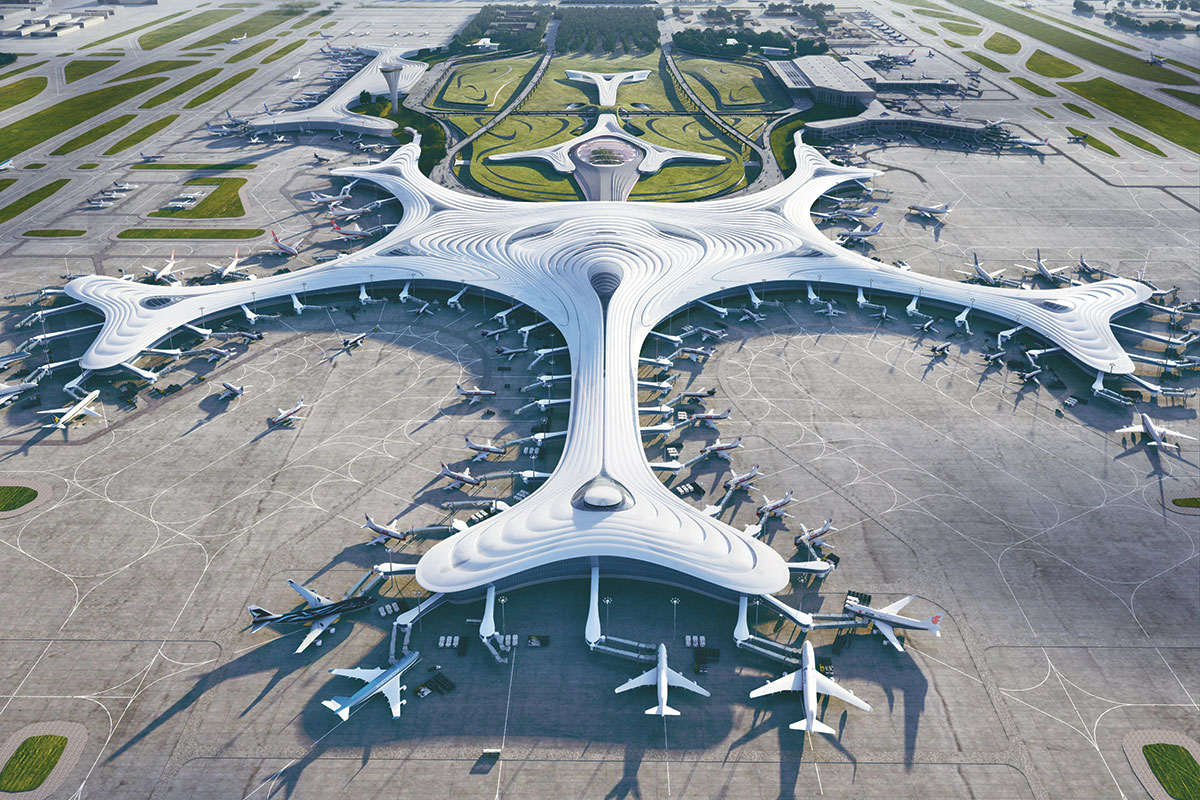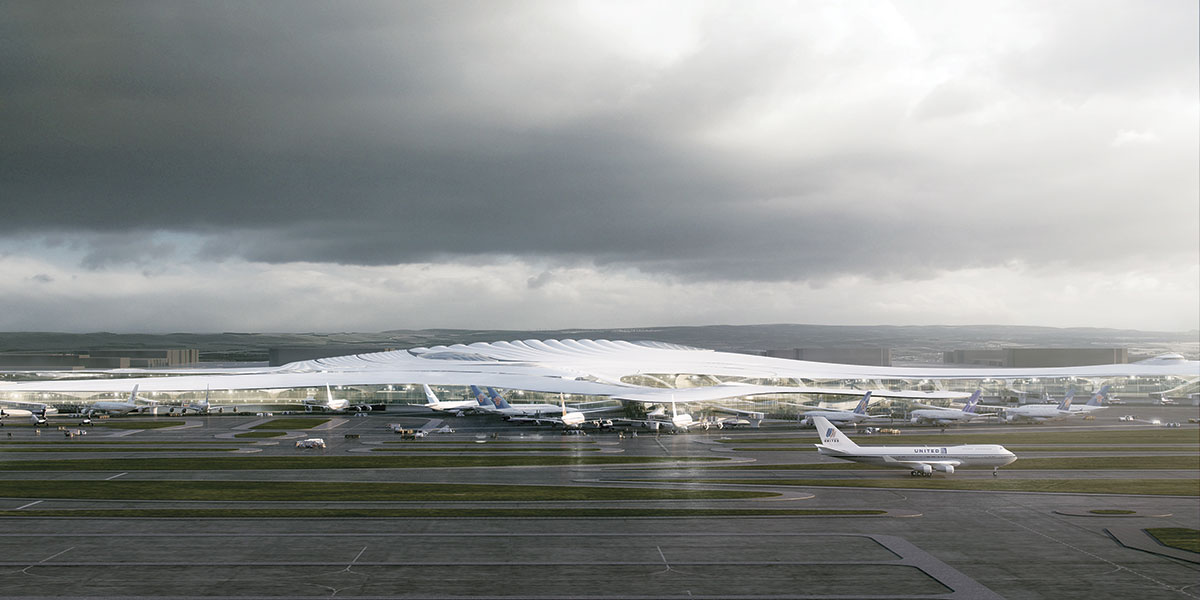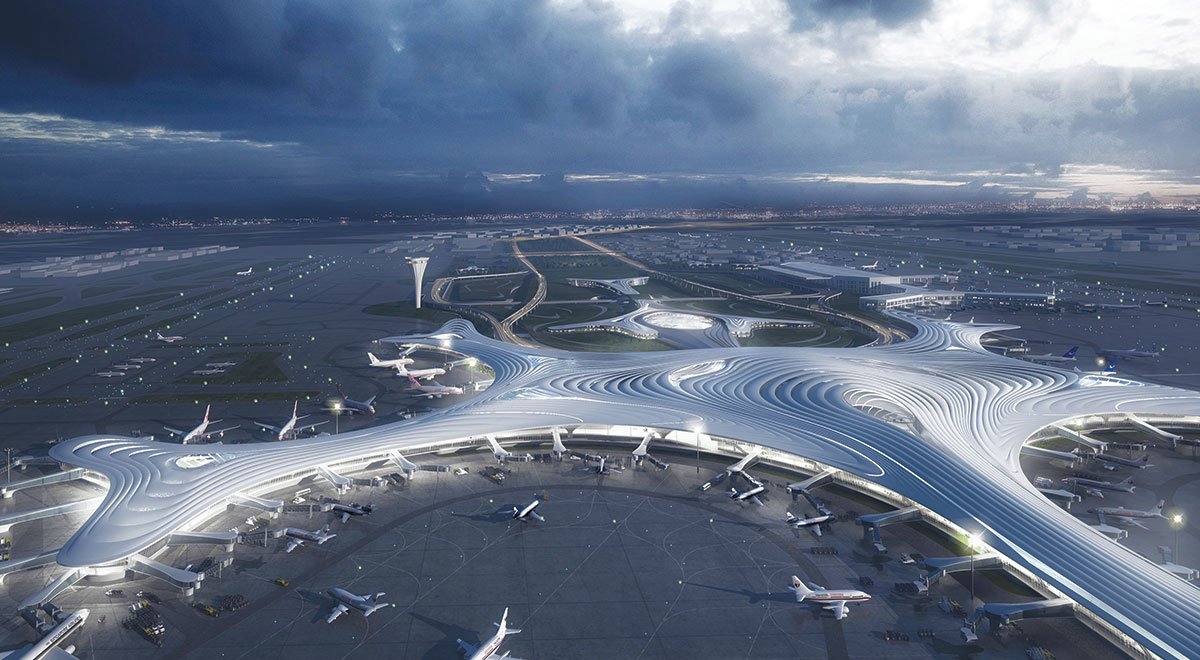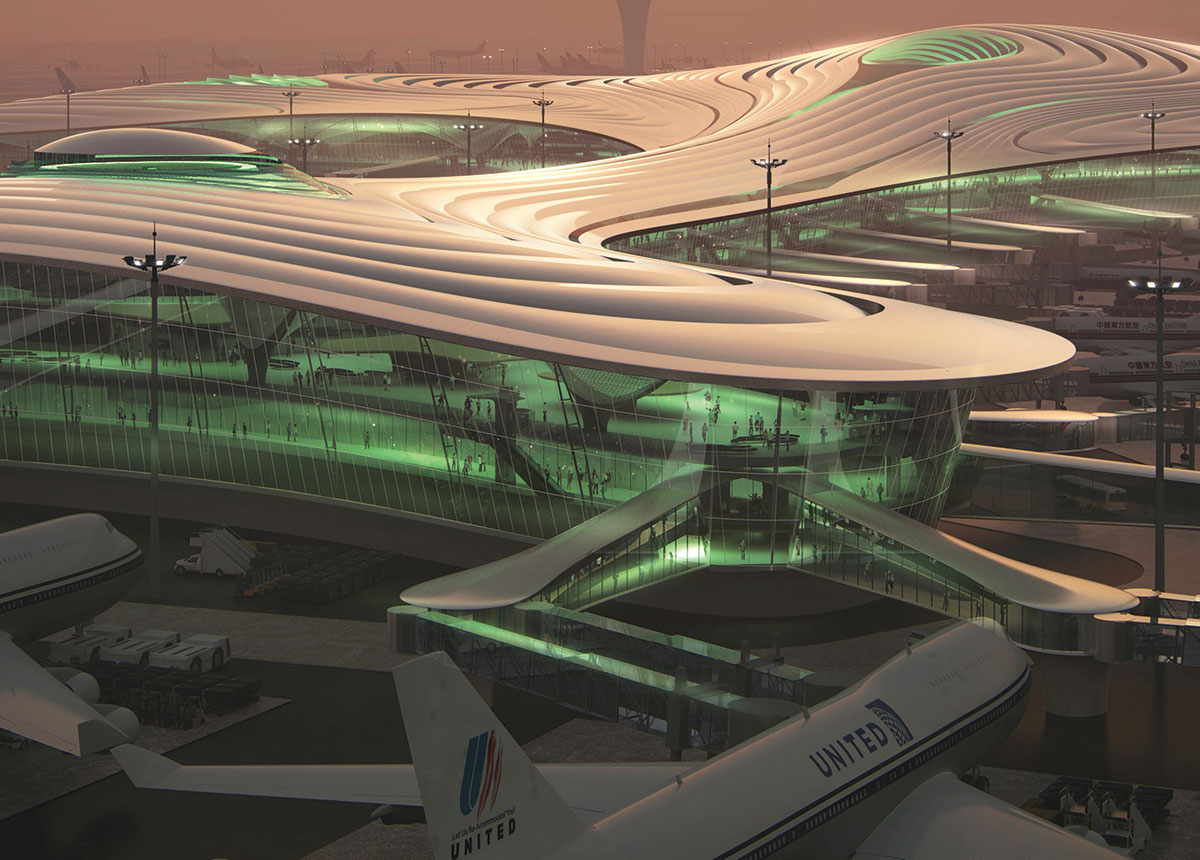
Fact File
Competition Organizer: Heilongjiang Airport Management Group Co., Ltd.
Airport Consultant: China Aviation Planning and Design Institute
Executive Architect: Central South Architectural Design Institute Co., Ltd.
Typology: Transportation Infrastructure
Site Area: 3,269 hectares
Building Area: 918, 500 sqm
Principal Partners in Charge: Ma Yansong, Dang Qun, Yosuke Hayano
Associate Partners in Charge: Liu Huiying, Tiffany Dahlen
As the capital of Heilongjiang Province, Harbin occupies a strategic position in the core of Northeast Asia’s hinterland, and serves as one of the largest transportation hubs of the region. The design of Terminal 3 of Harbin Taiping International Airport references the gentle slopes of China’s vast Northern plains, and the region’s immense snow and ice, expressing itself as a surreal, interstellar space of future air travel.

Terminal 3 will be comprised of ancillary airport facilities, including ground transportation hubs, hotel, retail, and parking lots. The scheme’s snowflake-shaped, five-finger departure corridors greatly shorten the time it takes for passengers to arrive at their gate, while minimizing congestion and improving the overall efficiency of the airport apron.
The interior has been landscaped with indoor gardens that demarcate major zones of the terminal. Ridges on the roof that mimic snowdrifts, function as skylights, flooding the internal spaces with the warmth of the sun, reducing the need for artificial light.

The Ground Transportation Center (GTC) hub brings high-speed rail, municipal subway lines, airport buses, and other urban transport together, conveniently connecting Harbin city to the airport and surrounding amenities. The multi-tiered GTC’s garden layout integrates natural plant growth into its various functions.
By 2030, Terminal 3 of Harbin Taiping International Airport is expected to reach an annual throughput of 43 million passengers, with approximately 320,000 outgoing flights per year. While the massiveness of the terminal is inevitable, MAD’s design manages to establish an architectural program that is human-scale, and provides a multi-sensory experience that is also efficient and energy saving.
















